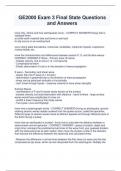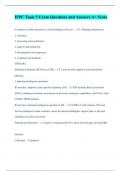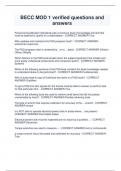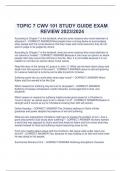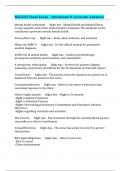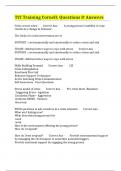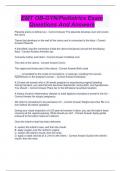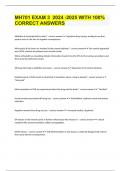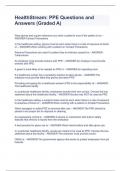Exam (elaborations)
GE2000 Exam 3 Final State Questions and Answers
- Course
- Institution
GE2000 Exam 3 Final State Questions and Answers know why, where and how earthquakes occur - CORRECT ANSWER-Energy that is released when: a) brittle earth material fails and forms a new fault b) slip occurs on an existing fault occur along plate boundaries, volcanoes, landslides...
[Show more]
